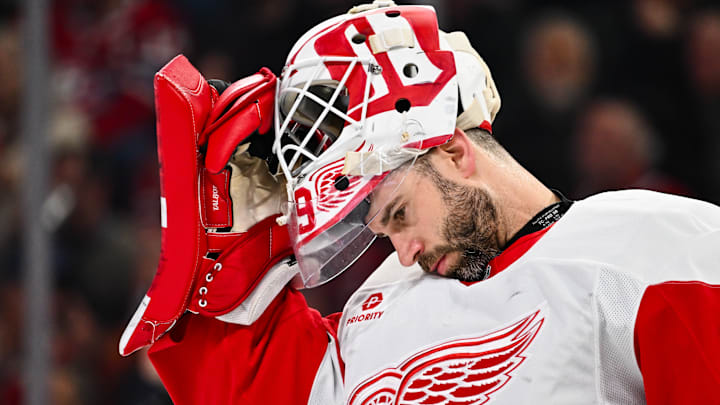Cam Talbot’s time in Detroit appears to be winding down.
It’s an unfortunate reality, given that the 38-year-old was a steady presence for the Red Wings last season, posting a 21–19 record across 47 starts with a .901 save percentage.
Yet the writing was on the wall the moment Steve Yzerman orchestrated a summer deal for longtime Anaheim Ducks netminder John Gibson, sending Petr Mrazek and two draft picks—Anaheim’s return being a 2027 second-rounder and a 2026 fourth-rounder—westward.
Cam Talbot doesn't fit the Red Wings long-term plans
Gibson has long carried the reputation of being one of the NHL’s most undervalued goaltenders, his prime years largely lost on a Ducks team mired in mediocrity. Even last season, Gibson managed a .912 save percentage but went just 11–11 in 29 appearances.
His peak came between 2015 and 2018, when Anaheim was a perennial playoff team and reached the Western Conference Final in 2017, falling in six games to Nashville. Since then, the organization has faltered, and Gibson’s brilliance often went unrewarded.
The move to Detroit offers Gibson the kind of defensive structure and organizational optimism that has been absent in Anaheim. With the Red Wings’ maturing blue line and one of the league’s strongest prospect pipelines, Gibson has reason to believe he can close his career on a high note—much as MacKenzie Blackwood has found renewed life after leaving San Jose for Colorado.
Talbot, meanwhile, finds himself in a precarious position. Beyond Gibson’s arrival, Sebastian Cossa’s rapid development looms large. Drafted 15th overall in 2021, the 6’6” goaltender has spent the last three seasons honing his game with the AHL’s Grand Rapids Griffins.
Last year, he logged 41 appearances, recording a 21–15–6 mark with a .911 save percentage and a 2.45 GAA. Cossa made his NHL debut on December 9 against Buffalo, entering in relief of Ville Husso and stopping 12 shots after Husso surrendered three goals on seven attempts. Though quickly returned to the AHL, Cossa left little doubt that he is on the cusp of NHL readiness.
Detroit faces a balancing act: there is no urgency to rush Cossa, but neither is there much value in keeping him in the AHL if he is ready for the next step. Goaltending remains the league’s great equalizer, and the Red Wings now hold a unique opportunity to give a future cornerstone the exposure he needs—under the guidance of Gibson, who understands both the burden and expectation of being a franchise goaltender in pressure-filled situations.
For Talbot, the scenario is clear. His tenure in Detroit is nearing its conclusion, not because of performance failure, but because of timing. The Red Wings’ goaltending future is arriving fast, and Talbot, a consummate professional, seems destined to be squeezed out in the transition.
Are the Oilers still interested?
We previously reported on Edmonton’s urgency to strike a deal with Detroit, and all indications suggest that desperation remains. If we were sitting at the negotiating table, one bold question would be whether Zach Hyman’s name should be in play.
Are the Oilers truly so intent on solving their goaltending dilemma that they would consider sacrificing one of their most productive forwards? Would they part with a cornerstone of their offensive depth in pursuit of stability in net?
At some point, something has to give—and the longer Edmonton waits, the more costly that decision may become.
